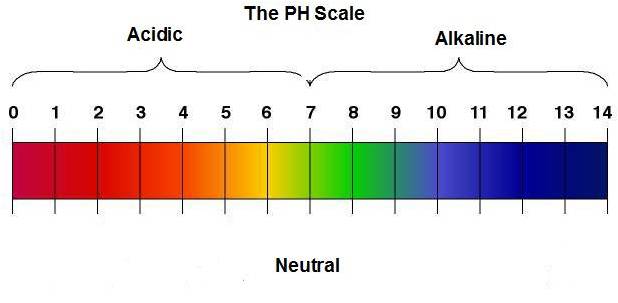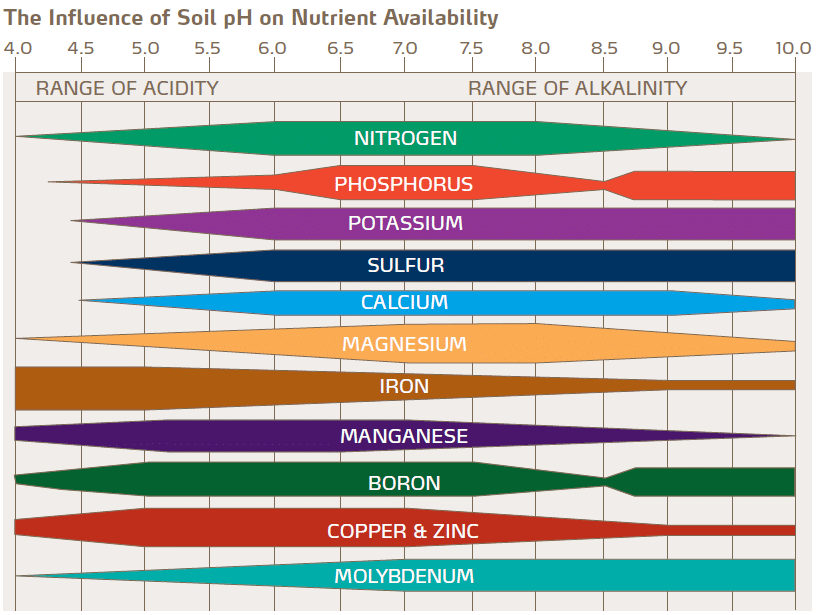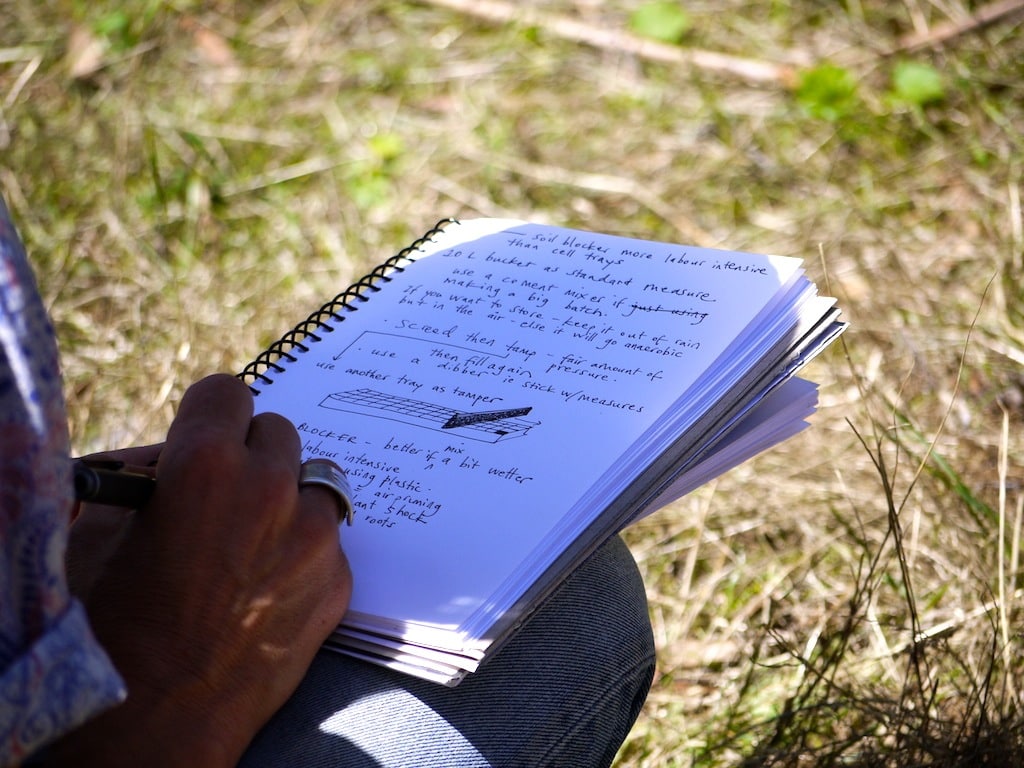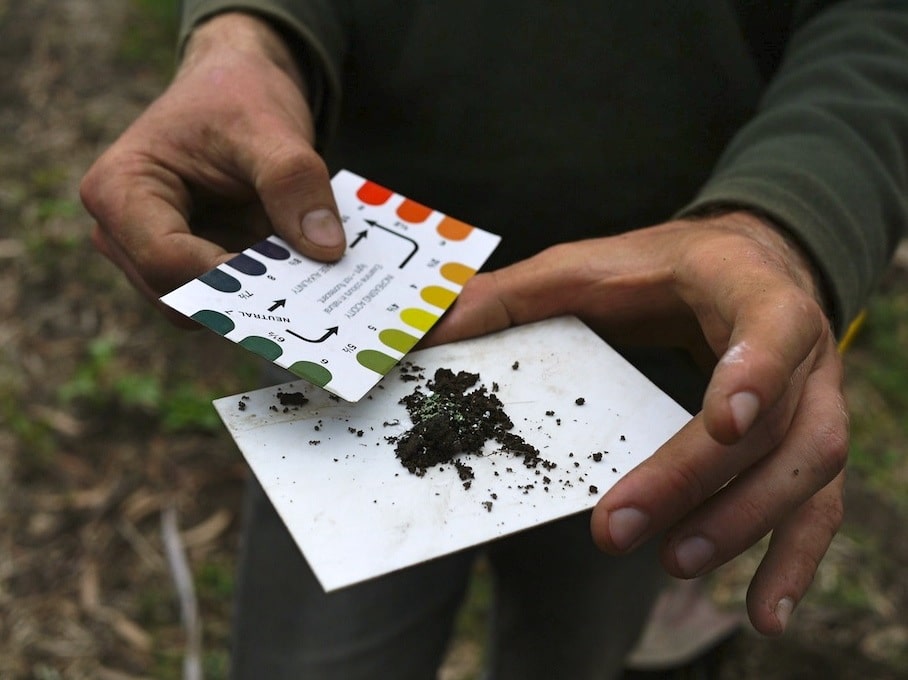How to: test your garden soil’s pH, and balance it for a better veggie harvest
So you’re resolved to grow the best darn vegetables ever. You’re on a mission to feed your family nutrient-dense, organic, home-grown food, to stick it to the supermarket, and to hopefully have enough to share with friends and neighbours too.
Getting your soil’s pH balanced can help a lot. Here’s how to do it:
Why test my soil?
Healthy plants should be able to get all (yep, ALL) of the nutrients they need from the soil.
But if your soil is too acidic or too alkaline, those nutrients won’t be available, no matter how much fertiliser you add.
Acidity has a strong effect on the ability of plants to take up soil nutrients as well as upon the wellbeing of soil organisms.
Most nutrients that plants need can be chemically assimilated when the pH of the soil solution ranges from 6.0 to 7.5.
- Below pH 6.0, some nutrients, such as nitrogen, phosphorus, and potassium, are less available.
- When pH exceeds 7.5, iron, manganese, and phosphorus are less available.
So getting your soil pH right is absolutely essential, if you want nutrient-dense veggies.

First, the basics of pH
pH is a measure of the acidity vs the alkalinity of the soil, and determines the capacity of that soil to exchange nutrients with plants growing in it.
As well as affecting the ability of plants to uptake nutrient by both chemical and biological processes, the pH also affects the diversity and species of soil microbiology.
pH is usually measured on a scale of 1-14:
- A pH of 7 indicates neutral soil
- A pH above 7 indicates alkaline soil
- A pH below 7 indicates acidic soil
Not all plants are the same – different crops prefer different levels of acidity – for example:
- Strawberries will yield well at a lower pH of 5.5 to 6.5
- Carrots love balanced soils pH of 6 to 7
- Sunflowers thrive in soils ph 7 to 7.5

So it depends what you’re growing as to what pH you want to nudge your soils towards. Keep in mind that most annual veggies prefer a bacterially dominated soil, which is leaning towards a pH of 7 – 7.5
Soil science and the nature and intricacies of the soil food web is a VERY BIG topic. And an awesome one, too. But for now, let’s leave it at that.
Basically, if you want a garden bed that the majority of your veggies will thrive in, you want to create soil that has a pH of 7 – 7.5.
How to test your soil with a simple soil ph test kit:
Firstly, get your hands on a soil pH test kit. These can be got from garden centres, or online.
We recommend the dye & powder system (scroll down the page) developed by the CSIRO ($29) , or Kelway Soil pH & Moisture Meter ($175) for broader areas.
- Use a small sample of soil, taken 10-15cm from the surface, and put on a the mixing card
- Add a few drops of the indicator dye and dust with the white powder supplied with the kit.
- Wait about 30 seconds for the colour change to take effect. You will get a more accurate result if you wait a few minutes.
- Use the colour chart to match the colour of your soil samples. Each color indicates what level pH your soil is.
- If in doubt, wait 2 minutes and check again the resulting color
- Take several measurements in different spots in the garden. A minimum of six samples from different parts of your garden is a safe amount.
- A single reading may be an anomaly, so it’s good to get an idea of the average pH in a plot. If they’re all around the same, take the average and amend the soil accordingly. If one spot is very different than the rest, however, you may need to “spot treat” it.
- Record your results in a garden diary. You may need to reference your test results at a later date, as they may change over time.
- Test your soil annually to know exactly what your garden’s nutritional requirements are.

How to balance your soil’s pH
So you’ve tested your soil in six places and you’ve found out that it’s generally a pH of… whatever it is.
Here’s some tips on how you can balance your soil…
If the soil is too acidic: less than 7 = low pH
Add green manure crops into your rotation with more frequency.
Add organic matter in the form of a well balanced, pH neutral compost… adding humus is the best way of changing pH… let the biology do the work!!
Add agricultural lime (not builders lime!). As a rule of thumb, carefully apply 100g to each meter squared. NOTE lime can only be accurately applied if a total mineral test is performed. It will take a while to increase the pH this way – you should see a change in the pH within 6 months. Be careful not to over apply.
Add Dolomite – BUT it contains Magnesium, which if it is already present in large quantities, could block other minerals. Again, a total mineral test is a good idea before doing this.
If soil is too alkaline: greater than 7 = high pH:
This soil will be harder to rebalance
Add organic matter such as pine needles or decomposed tree leaves.
Add green manure crops into your rotation with more frequency
- Add organic matter in the form of a well balanced, pH neutral compost… adding humus is the best way of changing pH… let the biology do the work!!
- In an extreme situation you could use powdered sulphur. Be very careful with this as sulphur is anti microbial… and will kill off your biology if applied regularly. Apply one handful per square metre, once a year. It works very slowly and you won’t notice a change in your pH for about 6 months.
There’s other, more in-depth roads you can go down with mineral testing for your soil (we recommend Swep Laboratories if you’re going this road).
But as you can hopefully see from the info above, balancing your soil’s pH is a great first step to healthy veggies.
In short, balancing your soil’s pH is a short-cut to growing healthy food.
Once you’re on your way with good soil pH, it’s much easier to treat mineral deficiencies if they crop up in your plants.
Because now, you’ve created a soil environment where the plants can suck up the goodness they need, once you give it to them.










Sir ,
this is very helpful to me can u send me nots on my gmail?
that would be very kind. thank you.
[email protected]
Thanks so much for sharing this awesome info! I am looking forward to see more posts by you!